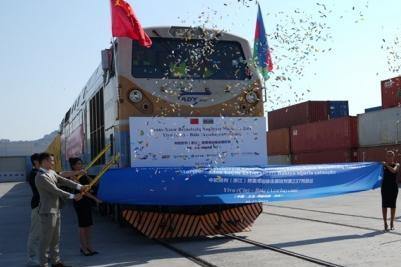In 2011, the China-Europe freight train service went into operation. Faster than a ship and cheaper than a plane, it ushered in a new era for rail freight and the launch of the Belt and Road Initiative two years later put it on a fast track to development. Seen as a "Belt and Road on rails," the service gave new energy to the efforts to revive the ancient trading Silk Road route.
The city of Duisburg in western Germany boosts the world's largest inland port. The city has closer and closer ties with China thanks to the cross-continental rail routes, and Wuhan, the capital of central China's Hubei Province, has been at the forefront of the boom in trade supported by the railroads.
A manager with a Chinese company that runs freight trains between China and Germany spoke with China Plus. The company's business started out by offering special trains to large clients, such as Foxconn. In March 2015, it began offering China-Europe rail freight services to the public, providing door-to-door, station-to-station services for small and medium-sized clients.
Each week, the company has three trains arriving in Duisburg Intermodal Terminal (DIT), a cargo hub in Duisburg's port area, from China, and has one leaving here for Wuhan.
Over the years, a growing number of German companies have incorporated the China-Europe trains in their logistics plans, and the range of goods transported from Europe to China have also expanded, from car parts, machinery, and clothing in the beginning, to many other products, including French wines, German beer, and Polish milk.




